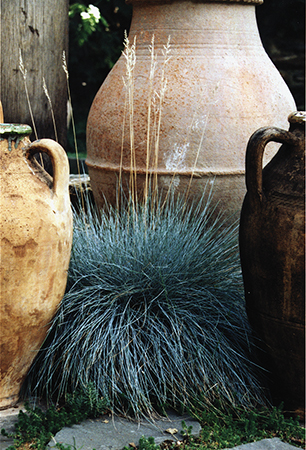Growth Or Confusion? by Allan Armitage

There were so many to choose from, she couldn’t make up her mind–so she didn’t buy any. That was my daughter Heather’s sentiment. She was reporting back to me after I recommended a heuchera. It puts into perspective the dilemma we so often see today: balancing the need for new plants with the need to simplify the buying of any plants.
“New crops are the lifeblood of our industry,” I wrote about new crops many, many years ago, and I believe that as strongly now as I did then.
Back then, however, I did not foresee the landslide of new crops and cultivars that has occurred in the last 10 years. It is unbelievable. In the trial gardens at the University of Georgia, we routinely receive 50 new geraniums, 20 new verbenas and 10 new torenias every year. In the past, add 20 new impatiens, 25 New Guinea impatiens and so forth.
Still, I believe the record was set this year when we received close to 70 new calibrachoas! Does anyone see a problem here? It is equivalent to piling on in football, except that the pile just gets bigger and bigger.
Plant breeders are a sick lot. They whisper to themselves about F-ones and twos, backcrosses and alleles–conversations they cannot have in polite company. That is why company CEOs keep their breeders in the back greenhouses. They cannot stop making new crosses, regardless of how incredibly ugly they are.
It is simply in their genes, so we might as well accept the fact new cultivars, new series and new crops will continue to cross our benches.
So we have the dilemma of the consumer, like my daughter not wanting so many choices, and breeding companies encouraging the development of more and more. I do not see this changing in the near future, so what can we do?
Who Will Fix This?
In a perfect world, only the best calibrachoas, impatiens, heucheras or coneflowers will be sold. The “best” means the best performing plants in the local area. My daughter doesn’t know, the retailers can’t trial all the new material and the growers are just happy to see it go out the door. So who is getting the plant on the grower bench?
Well, it’s the marketing people. Horticulture in the hands of marketers–now that’s a whole new world.
But that is the way of all businesses, so should we be any different? Not really, I suppose. We are not dealing with automobiles or furniture or bathroom tissue. We are dealing with living plants, and they respond differently in different areas of the country. Marketing and promotion will continue to be even more visible in the future, but it must improve. I believe confusion can be reduced if marketing and promotion is based on actual data.
I envision a formal national trialing program similar to All-America Selections (AAS), using existing trial sites and developing more where needed.
Today, there are excellent trial programs around the country. Trial sites, however, now compile and disseminate their data in different formats, making them difficult to interpret. With a national trialing program, breeders, brokers, distributors and growers could track a plant in a trial closest to them.
Lots of questions arise when I mention this, such as how much, where the data would be sent and how it would be collected. These are details: give me five leading breeders who want to do this, put their money into it and I’ll find the trial sites.
The Future Is Good
The future is good for our industry. I have no doubt new crops will continue to propel us forward. We can make their introduction in the marketplace more meaningful by paying more attention to their value rather than their appearance. If we keep adding plants higgledy-piggledy with no way to sort them out, that is simply not going to play in Peoria much longer.
There are thousands of species we have not even looked at, perhaps a few less petunias and a few more iochromas may be seen in the future. Breeders are creative, so who knows what’s around the corner?
As for me, I sent my daughter back to the store, told her to buy the first heuchera she saw and then went to my trial garden to admire a yellow calibrachoa that I missed before.









